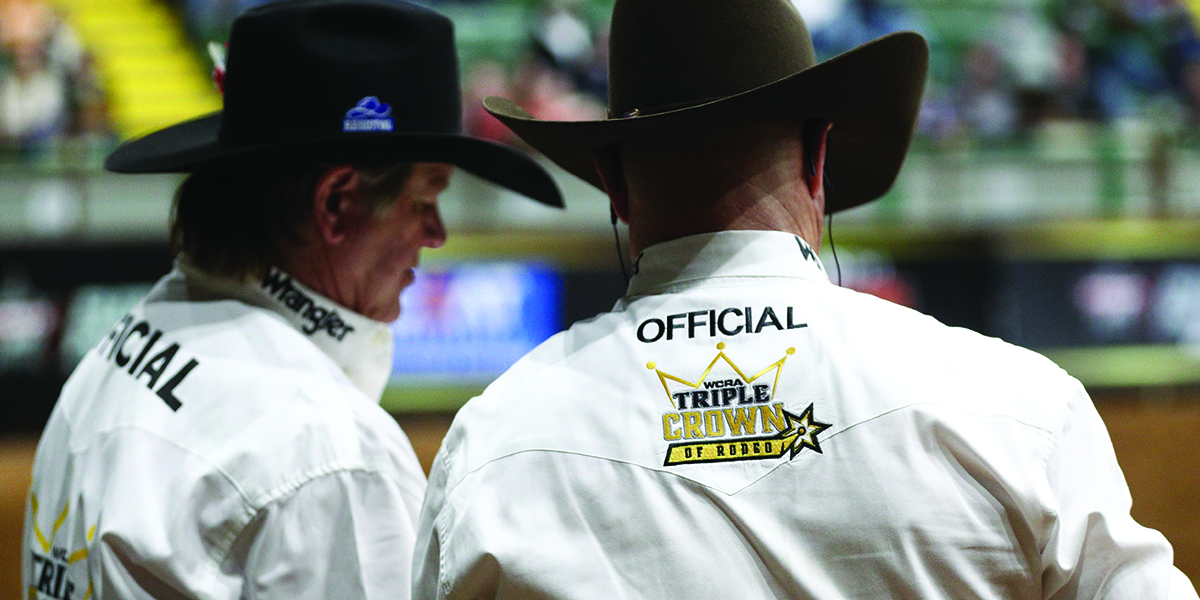
By: Jolee Jordan
The 2022 Cowtown Christmas Championship Rodeo inside the historic Cowtown Coliseum featured superb rodeo action. With outstanding efforts, champions earned a big payday from the World Champions Rodeo Alliance (WCRA) worth $15,000 apiece.
Even bigger, bareback rider RC Landingham hit the dirt following his ride in the Triple Crown of Rodeo Round in celebration, waiting mere moments for his score of 89.5 points to confirm that he’d just made history as the WCRA’s first Triple Crown of Rodeo presented by Lazy E Ranch & Arena $1 million bonus winner.
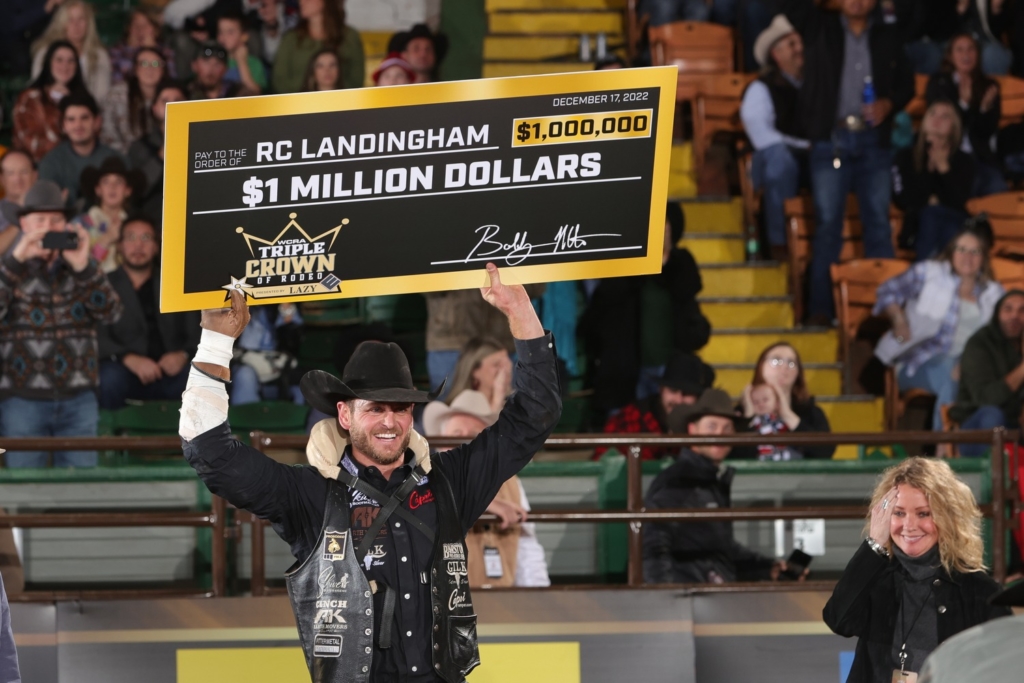
While the athletes celebrate their huge performances, they rely heavily upon the skill of judges and timers to document their efforts. An outstanding eight-second bull ride, or super quick catch of a breakaway calf right across the line, requires someone to assign a score for the rough stock events or to accurately record the time for timed events in order to sort out who goes home with the money.
“Our customer is the athlete,” Bobby Mote said. Mote is the President of the WCRA and also serves as the Director of Competition on the WCRA’s Competition Committee. “Our theory is that if we are not making it good for the athlete, then we’re failing our customers. And, since we’re not a non-profit, if we fail our customers, then our business will fail.”
This corporate culture can be seen in efforts to make competition conditions as fair and even as possible (given the nature of working with animals). It is also evident in time and energy invested into ensuring that scoring and timing are done properly and according to WCRA rules.
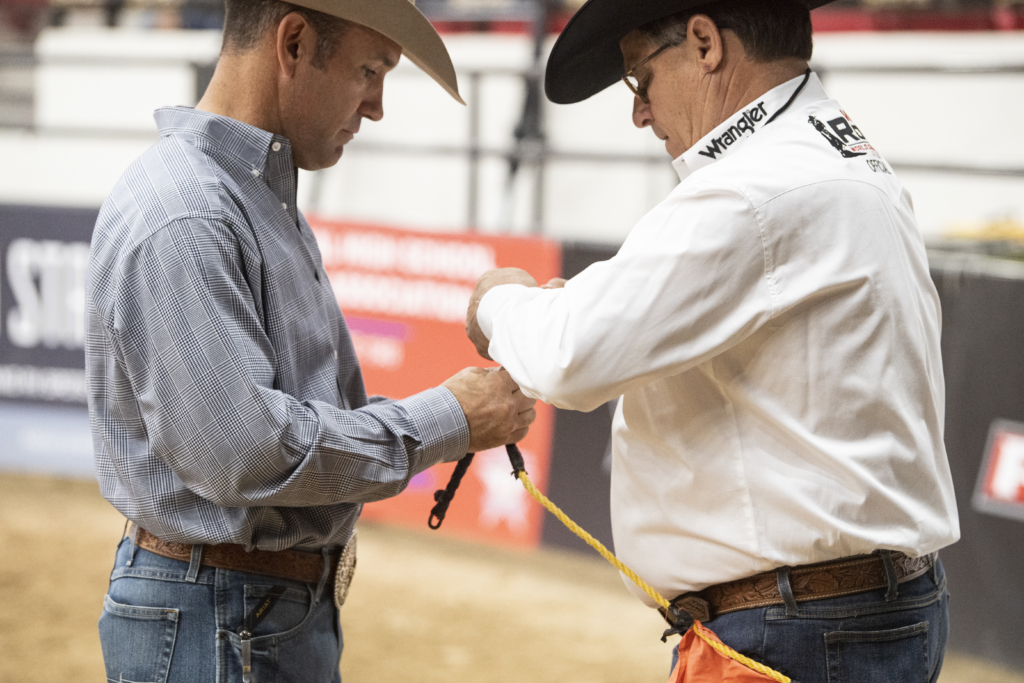
The WCRA created their rulebook from scratch and have made it a priority to be willing to change when situations show that a rule isn’t creating the desired outcome. With a “season” that is actually divided into segments instead of based off a 12-month cycle, changes can be made much more quickly.
“We’ve found in rodeo that a lot of things are done a certain way because they’ve always been done that way and really it doesn’t always make a lot of sense and hamstrings the athletes,” Mote said. “We been criticized some for changing too much but when you’ve got $1 million on the line, every situation has to be covered in the rules.”
When hiring to fill the positions of timer and judge, the WCRA leadership looks for individuals with experience and the skills to fulfill the requirements of the job. They want people with the highest level integrity and the right attitude.
“Our goal as officials, and it’s the WCRA mindset too, is that we just want to get it right,” Peterson said. “The guys we have used [as judges] are not scared of replay, not worried about looking bad if a call is overturned. Our common goal is that the calls are made right and the money goes where it’s supposed to go.”
Rough Stock
Four judges work each rough stock event with two placed in the arena to score the rides and two on the back of the chutes to watch for fouls as the competitor and animal enter the arena and to start the official time clock for the ride.
Scoring is based on a 100-point scale with each judge responsible for a maximum of 50 points, up to 25 for the animal and up to 25 for the ride. Animals are scored on the bucking motion according to attributes like kick, drop, spin, intensity, and difficulty. Riders are rewarded based upon their control during the ride and spurring motion in the horse riding events. Unique to WCRA, missing the mark-out is a five point deduction per side and not a disqualification.
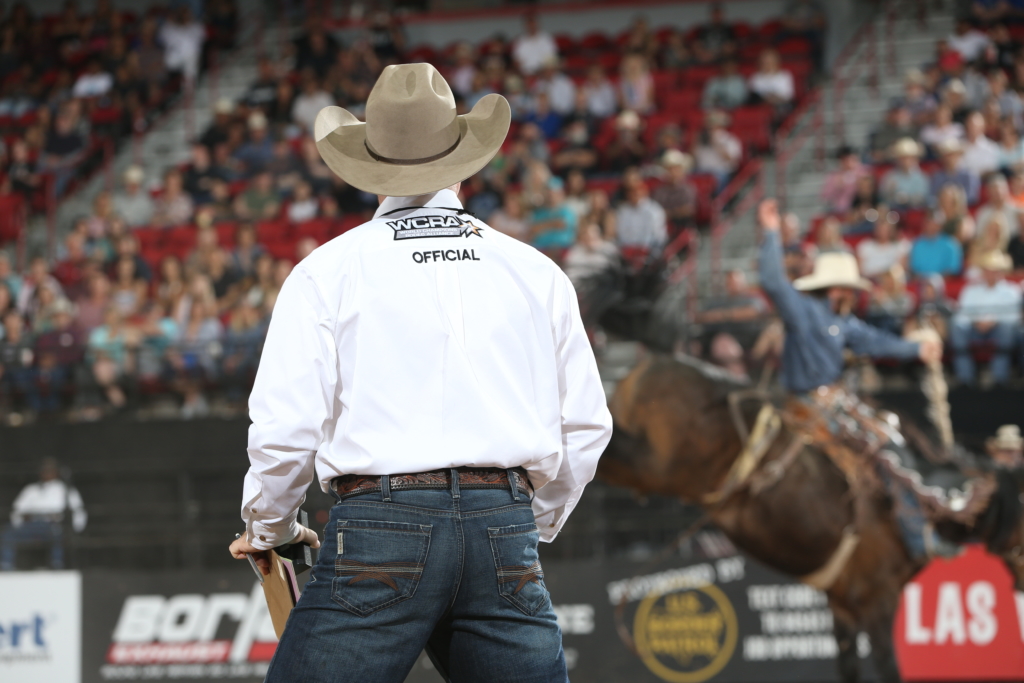
Certain positions also handle a manual stopwatch as a backup for in-arena production equipment used as the primary. Should any failure occur, at least one official will have the ride time on his watch.
Following each event, judges’ sheets are submitted to the rodeo secretary for the verification process. Once scores are double-checked, any errors are addressed by the judge and scores are declared official.
In the timed events, one judge is designated the line judge. He verifies that the barrier is working properly and documents any broken barriers for the five-second penalty assessed under WCRA rules. Another judge serves as the field flagger and his job is to signal the end of the run. He also assesses penalties for single leg catches in the team roping and crossfires (which incurrs a ten second penalty instead of a disqualification) and signals when a disqualification is warranted.
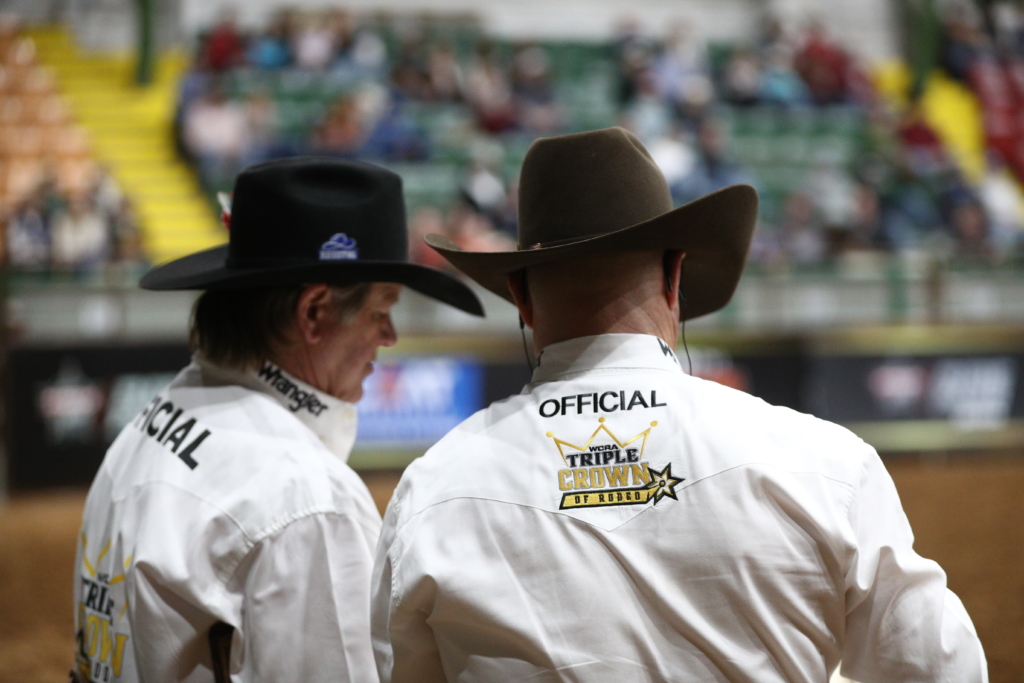
In the breakaway roping and steer roping, a third judge acts as spotter, helping the flagger determine the legality of a head catch (bell collar only in breakaway) and a trip in the steer roping. For tie down roping, a disqualification is issued when a roper does not keep a calf standing through the switch and three judges are positioned to help make this call.
Timers are responsible for starting the clock when the barrier pulls and stopping it on the flag judges’ signal. It requires focus, concentration and good reaction time without anticipating flags.
At WCRA events, the main timing system is connected to the Professional Bull Riders’ RidePass production, allowing times to be displayed in the arena and on the television broadcasts. Once the two clocks are stopped, the system automatically averages the two timers’ results to produce the final time as required under WCRA rules.
In addition to the main system, each timer also runs a manual stopwatch in case of system failure. Should anything go awry with the main system, timers can use their stopwatch to ensure the contestant’s time is not missed.
Barrel Racing
For barrel racing, WCRA requires the use of two electric eyes as well as the timers’ backup stopwatches. Both the RidePass eyes and FarmTek Rodeo Timing system eyes are checked by judges, timers and production personnel prior to the event and all three system’s times are recorded on the timers’ sheets.
“We have backups on the backups,” Peterson noted. “Within our system, there are several clocks running simultaneously.”
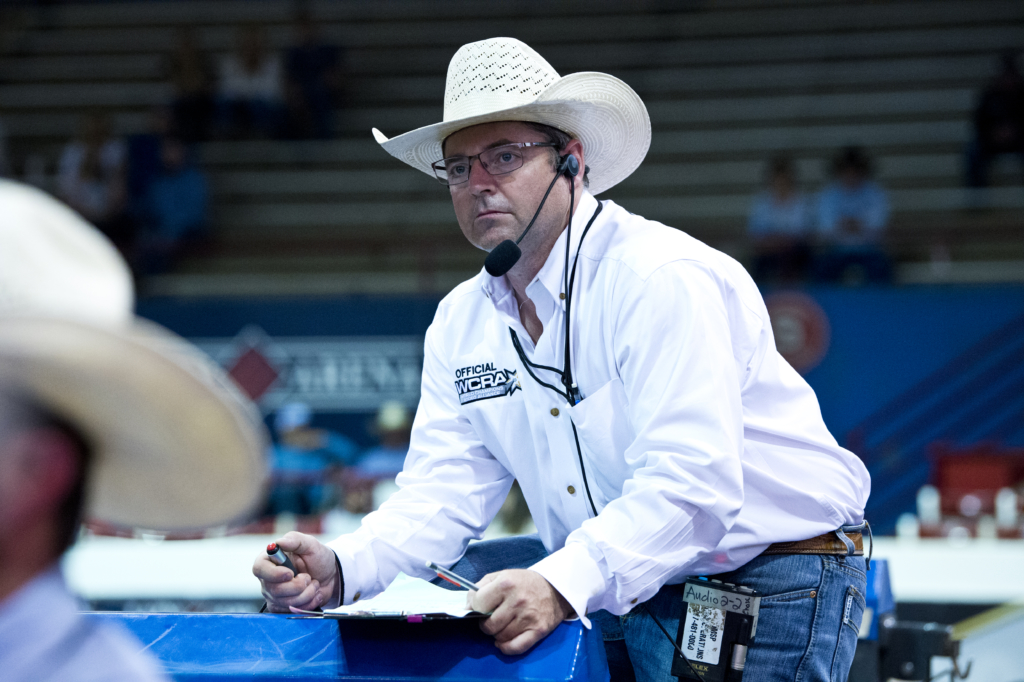
Mote noted that while the RidePass eye is the system plugged into the television production, it is backed up by a FarmTek eye, one of barrel racing’s most known and respected systems, making use of the third backup, hand times, an extraordinarily rare occurrence in WCRA competition.
For all events, timers document the raw time on their sheets, then assess penalties for barrier or field infractions and calculate the total time. All steps are necessary to produce a written accounting for what happened within the arena.
After each event, timer sheets are then compared to judges’ sheets to ensure that all penalties were recorded properly. Times are checked for addition and then certified official.
Instant Replay Ruling Challenges (IRRC)
The WCRA is currently the only rodeo using replay review. For every WCRA event, a Replay Judge is also assigned and WCRA Competition Rules spell out which calls are open to a replay challenge. Some calls that are open to replay are fouls, crossfires in the team roping, broken barriers, mishandling in the tie down roping, mark out rule and disqualifications prior to eight seconds in the rough stock events.
“Someone is designated for each event to serve as the replay judge,” Peterson explained. “During a performance, we are all in constant communication so if one of us sees something suspect, we can send it to the review.”
Judges, contestants and WCRA Competition Committee members can call for a review. Contestants may challenge a call on their own run or ride or on that of another contestant.
Grievance Procedure
WCRA also offers a grievance procedure for any disputes that may arise during an event. The athlete’s issue will be brought before the WCRA Competition Committee for a ruling.
“If someone has an issue, the Competition Committee will go through the facts and determine our response,” Mote said. The Committee consists of WCRA officials, judges and other local committee representatives. “We’ll decide what we’re going to do and try to always weigh what’s best for the athletes.”
“If we messed up, we own it,” Mote stressed. “That’s the first thing. Athletes can understand mistakes but it’s a lot harder to swallow if you don’t own it. Maybe we can’t do anything retroactively to fix it, but going forward we look for the solution to keep it from happening again.”
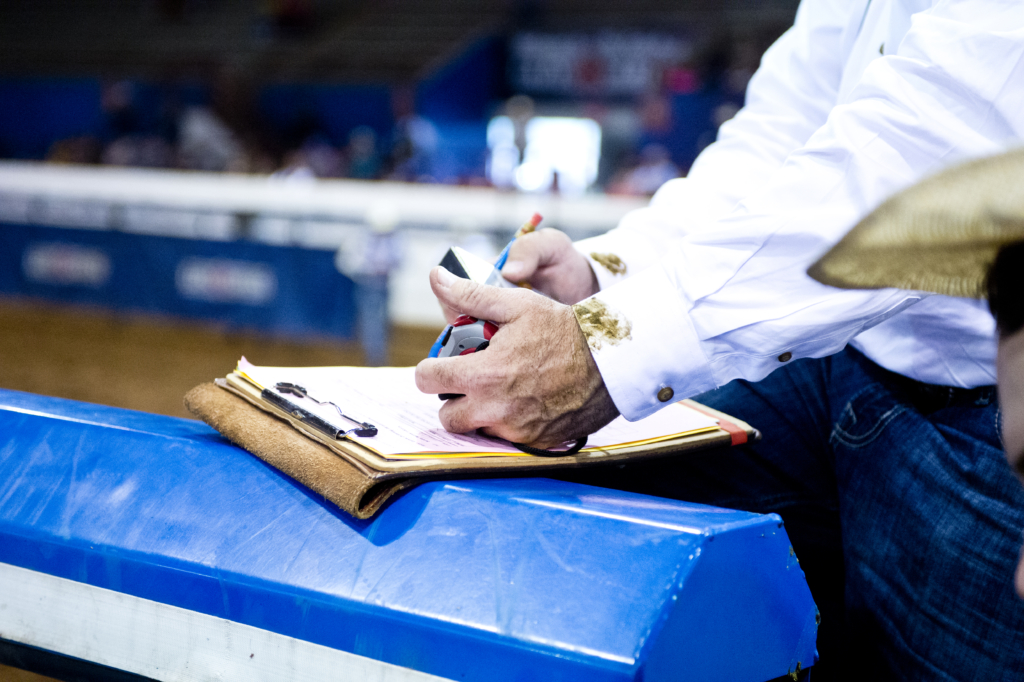
WCRA also conducts athlete surveys following each event, leaving space for comments as the team has found that fosters the best chance to find solutions and good ideas for future improvement.
“What the WCRA does different, is that we are trying to get to the right call all the time,” Peterson said. “We’re not always perfect but that’s the goal.”
“At the end of the day, we want to make it as good as possible for the athlete,” Mote said. “It makes our team sick to our stomachs when an animal puts a guy out of having a chance to win but animals are animals and you can’t control that. But anything you can do to control the fairness of the competition, you should.” “It’s hard enough to win in rodeo,” he said. “We don’t need to make it harder with bad conditions


